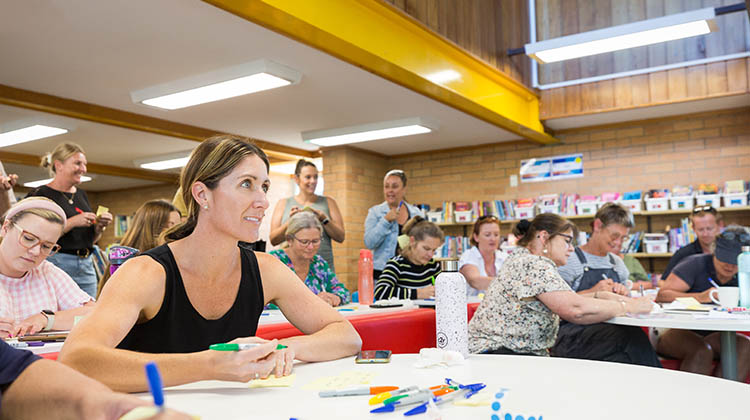Schools and Scientists Connect to Boost STEM

In the CSIRO, we have one of the world’s best scientific organisations, some pretty well known technologies have been invented at the organisation, like WiFi, and now schools and teachers are being given the opportunity to really engage with the CSIRO.
Spanning five years, the STEM Together program includes three streams that will build the capability and confidence of teachers and students to engage in STEM. Adding to the Future Shapers recognition program, STEM Together facilitates development sessions for teachers, and learning experiences for student groups. These can include class activities, connecting to industry professionals, and excursions, all based on real-world STEM.
The multi-million dollar STEM Together program highlights the importance of Science, Technology, Engineering and Mathematics (STEM) thinking in year 5-10 students. It encourages them to build transferable skills like innovation, problem solving and critical thinking.
Director of CSIRO Education and Outreach, Ruth Carr, said STEM skills will play a critical role in Australia’s future.
“As a country, we must ensure our young people have the skills to face the challenges the world throws at them and to make sure Australia remains globally competitive. If we don’t do this we’re going to fall behind,” Ms Carr said.
“We can put cutting edge science into the hands of young people to build a strong, and diverse STEM capable workforce that Australia needs now and in the future, and this starts at school.”
“STEM Together will upskill teachers so that they’re confident in teaching STEM. We’ll show students what STEM is like in real life, and we’ll reward their interest in STEM with prizes tailored specifically to them.”
As part of the program, a ‘Future Shapers’ initiative offers nominated students or their supporters the opportunity to design a unique experience related to a STEM area they’re interested in. If a nominee was curious about marine life, for example, then there are different ways to tailor the prize.
“We could bring them to the Great Barrier Reef to see research in action. Alternatively, we could put them in touch with marine biologists as mentors; or give them some equipment to keep exploring,” Ms Carr said.
Sofie Rodda, a teacher at Lumen Christi Catholic College, a regional school on NSW’s Sapphire Coast, said she was impressed with the program’s potential impact.
“The chance for students to work with real-world experts could possibly change the course of their lives,” Ms Rodda said.
“Our students don’t live in the city, so they don’t have these resources at their fingertips. It’s amazing that CSIRO can come to us and give them opportunities that they wouldn’t normally get.
“It’s nice to broaden their ideas, and let them know there’s heaps more out there,” she said.
The program is backed by a partnership between CSIRO and corporate philanthropy BHP Foundation. It aims to boost representation for student groups that have traditionally had lower participation rates in STEM, including students from regional schools; girls; Aboriginal and Torres Strait Islander students; and those from less advantaged areas.
Research by the Harvard Kennedy School shows the average 15-year-old from a lower advantage background in Australia is three years behind their peers from high socio-economic backgrounds in maths and science. According to the Programme for International Student Assessment, the average 15-year-old from a remote location is 1.5 years behind their inner-city counterparts in maths. Beyond school, a report from the Office of the Chief Scientist shows that only half a percent of Aboriginal and Torres Strait Islanders hold a STEM degree, while the STEM Equity Monitor report stated that women make up only 36 per cent of STEM university enrolments.
BHP Foundation Australia Program Director Victoria Thom said the program challenges stereotypes of what makes a STEM student or professional.
“Evidence shows us the greatest way to solve complex problems is by harnessing diverse minds,” said Ms Thom.
“Currently Australia’s STEM talent pipeline is missing representation from a diversity of students. By valuing strengths like curiosity, critical thinking, perseverence and how these can be applied to investigate or solve real-world problems, we hope CSIRO’s program will encourage more students to see themselves in STEM subjects and career paths.”
Nominations for the STEM Together Future Shapers program are open until 2 May.
Website links
STEM Together: www.csiro.au/stemtogether
STEM Together Future Shapers: https://www.csiro.au/en/education/Programs/STEM-Together/STEM-Together-Future-Shapers
CSIRO Education and Outreach: https://www.csiro.au/en/education